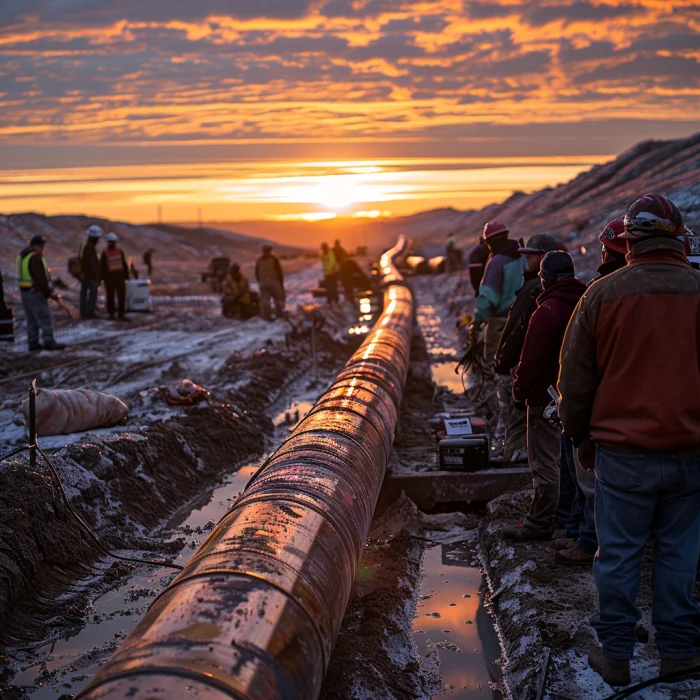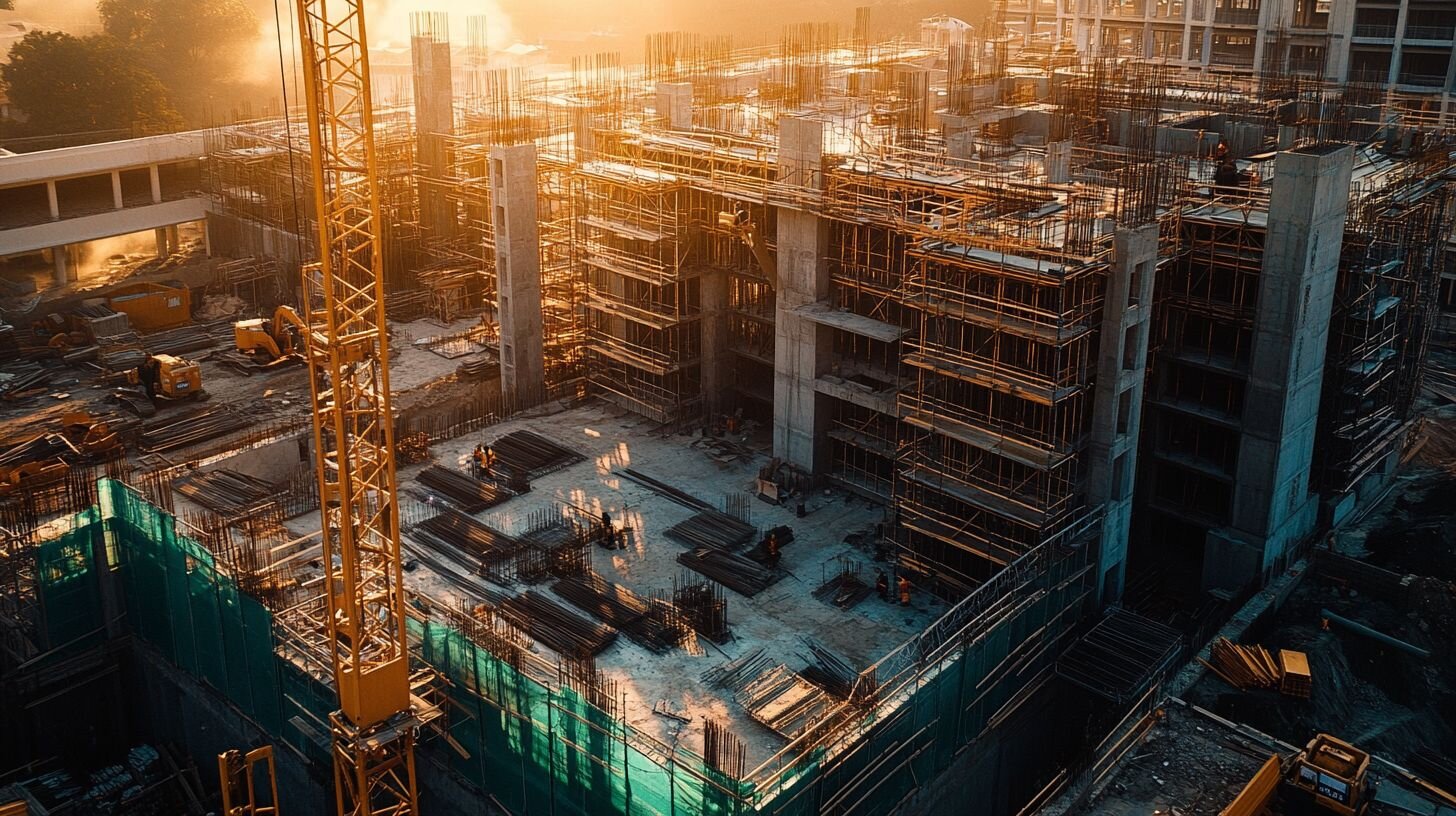Pipeline Construction Software refers to specialized applications designed to streamline and manage the planning, execution, and maintenance phases of pipeline construction projects. These software solutions offer a comprehensive toolset for project managers, engineers, and construction teams to efficiently tackle the complexities involved in laying pipelines. From route planning and design to materials management and compliance tracking, these platforms aim to optimize operations, ensuring projects adhere to timelines and budgets.
With functionalities tailored to address the unique challenges of pipeline construction, such as terrain analysis, environmental impact assessments, and safety regulations, these software systems facilitate improved decision-making. They integrate various aspects of project management including scheduling, cost estimation, and workforce allocation, enabling a cohesive approach to construction activities. By leveraging real-time data and analytics, stakeholders can anticipate potential issues and adjust plans accordingly, enhancing project outcomes.
Furthermore, Pipeline Construction Software often incorporates features for collaboration and communication among project teams. This not only promotes transparency and accountability but also allows for the seamless exchange of information. The ability to track progress, monitor resources, and manage documentation in a centralized platform reduces the risk of errors and delays. As the demand for efficiency and sustainability in construction projects grows, these digital solutions play a pivotal role in advancing the pipeline industry by providing the means to execute complex projects with greater precision and control.
The advent of Pipeline Construction Software marks a transformative phase in the field of civil engineering and construction management, particularly for projects involving the installation of pipeline systems. These digital tools are reshaping how projects are planned, executed, and delivered, introducing unprecedented levels of efficiency and accuracy. As the global energy sector continues to expand, the need for robust, reliable infrastructure to transport oil, gas, and water has never been more critical.
Today’s construction projects face a myriad of challenges, from adhering to strict environmental regulations to managing intricate logistics and fluctuating resource prices. Pipeline Construction Software emerges as a vital asset for project teams, providing a unified platform to navigate these complexities. By digitizing traditional processes, these software solutions enable stakeholders to make informed decisions, leveraging data-driven insights to optimize project outcomes.
As we delve deeper into the capabilities and advantages offered by Pipeline Construction Software, it becomes evident that these tools are not just about automating tasks but about redefining the very approach to pipeline construction. This introduction aims to explore how these innovative solutions foster a more collaborative, efficient, and sustainable construction environment. Through the integration of advanced technologies and methodologies, Pipeline Construction Software stands as a cornerstone for successful pipeline projects in the modern era, setting a new standard for excellence in the field.
Key Features to Look for in Pipeline Construction Software
Selecting the right pipeline construction software is crucial for ensuring efficiency, accuracy, and safety in construction projects. First and foremost, one must seek software that offers comprehensive project management features. These include tools for project tracking, scheduling, and documentation. Efficient project management streamlines operations, reducing the likelihood of delays and cost overruns.
Moreover, real-time collaboration capabilities are indispensable. Project stakeholders, including engineers, contractors, and clients, need to communicate and share documents seamlessly. Consequently, software that facilitates instant updates and feedback between teams enhances coordination and decision-making processes.
Another critical feature is compatibility with existing systems. Integrating new software with the company’s current hardware and software infrastructure should be straightforward. It ensures that the transition is smooth and that there are no disruptions to ongoing projects. Also, the software should easily adapt to various project sizes and complexities, demonstrating scalability.
Additionally, data security cannot be overstated. The chosen software must have robust encryption and secure data storage to protect sensitive information. Given the confidential nature of many construction projects, top-tier security measures prevent unauthorized access and data breaches.
Furthermore, user-friendly interfaces are also key. Software that is easy to navigate improves user adoption rates and minimizes training time. Employees can quickly become proficient, focusing their efforts on productivity rather than struggling with complicated software.
Compliance with industry standards is also paramount. The software should support adherence to regulations and safety protocols. This feature not only ensures legal compliance but also promotes best practices in pipeline construction.
Finally, technical support is a vital consideration. Reliable customer service and technical assistance ensure that any issues with the software can be promptly addressed, minimizing downtime.
In conclusion, when choosing pipeline construction software, look for solutions that offer extensive project management tools, real-time collaboration, system compatibility, data security, user-friendly interfaces, compliance features, and robust technical support. These functionalities streamline workflows, enhance collaboration, and ensure project success.
Overcoming Common Challenges in Pipeline Construction through Software
The construction of pipelines faces numerous challenges, ranging from planning and design to execution and maintenance. However, recent advancements in software have provided robust solutions to these obstacles. Such technology offers precision in planning, enhances safety, and ensures regulatory compliance, significantly reducing the risks associated with pipeline construction projects.
Initially, the planning phase of pipeline construction involves complex analysis of terrain, environmental impact, and route optimization. Through software applications, engineers can now access detailed geographic information systems (GIS) and perform simulations to anticipate potential issues before groundbreaking. Furthermore, these tools facilitate the identification of the most efficient routes, saving both time and resources.
Another significant challenge is maintaining safety and adhering to stringent regulations. Software solutions equipped with real-time monitoring capabilities allow project managers to ensure that construction practices meet the industry standards. They enable immediate responses to any deviations from safety protocols, thus mitigating hazards on the spot.
Additionally, the integration of project management software streamlines communication among teams. This aspect is crucial, as pipeline projects often span vast distances and involve numerous stakeholders. Efficient communication helps in avoiding misunderstandings and delays, ensuring that the project progresses smoothly.
Moreover, documentation and compliance are simplified through digital means. Software can automatically generate and store necessary documents, making audits and regulatory checks less cumbersome. This digital approach not only saves time but also reduces the likelihood of human error.
In conclusion, the challenges of pipeline construction, though significant, can be effectively overcome with the aid of software. From precise planning and safety enhancements to regulatory compliance and streamlined communication, these digital tools have revolutionized the pipeline construction industry. They offer a path forward that minimizes risks and maximizes efficiency, ensuring the successful completion of projects in this critical sector.
Enhancing Safety and Compliance in Pipeline Projects with Technology
Pipeline projects feature prominently in the energy sector, necessitating the highest safety and compliance standards. Traditionally, these projects depended heavily on manual inspections and paper-based compliance documentation. However, technology now plays a pivotal role in revolutionizing these aspects.
Firstly, drones and robotic inspections have become invaluable. They offer a bird’s eye view and access to challenging terrains, which is often impossible for human inspectors. This improvement not only enhances safety by reducing human exposure to hazardous conditions but also increases the frequency and scope of inspections. Furthermore, the data collected is more accurate, providing a solid basis for maintenance decisions.
Moreover, Geographic Information Systems (GIS) have transformed how pipeline routes are planned and monitored. Through GIS, companies can foresee and mitigate environmental risks, ensuring that pipelines do not adversely affect sensitive ecological zones. This careful planning promotes regulatory compliance and reduces the likelihood of expensive legal battles or fines.
In addition, the advent of real-time monitoring systems has been a game-changer. Sensors placed along pipelines detect abnormalities, such as pressure drops or leaks, almost instantaneously. Consequently, response teams can act swiftly to prevent or mitigate incidents that could endanger public safety and the environment.
Meanwhile, compliance documentation has also seen a significant shift from paper to digital form. Cloud-based platforms now allow for the seamless collection, storage, and sharing of compliance data. Hence, regulatory bodies can easily access and audit this information, ensuring that pipeline projects adhere to the latest safety standards and legal requirements.
Finally, advanced training simulations use virtual reality (VR) to prepare workers for emergency scenarios without exposing them to risk. This hands-on learning approach has significantly improved safety outcomes by equipping personnel with practical experience and competence in handling potential crises.
In summary, technology has become indispensable in enhancing safety and compliance in pipeline projects. By embracing these technological advances, the industry can achieve higher safety standards, meet regulatory requirements more effectively, and foster a culture of continuous improvement.
The Role of Real-time Data in Streamlining Pipeline Construction Processes
In the complex and time-sensitive world of pipeline construction, the integration of real-time data plays a pivotal role. This modern approach significantly enhances decision-making, efficiency, and safety protocols. Real-time data collection offers a comprehensive view of the project’s status, ensuring that managers can make informed decisions swiftly. Furthermore, it minimizes downtime and optimizes resource allocation.
Firstly, real-time data enables project managers to monitor progress accurately. They can compare current performance against planned schedules, identifying any discrepancies early. This level of insight allows for swift adjustments. For instance, if a segment of the pipeline is lagging, resources can be redirected to address this bottleneck. Similarly, real-time weather data can inform necessary changes to work schedules, ensuring the safety of workers and the integrity of the pipeline.
Moreover, the utilization of real-time data extends to the maintenance of equipment. Real-time monitoring helps in identifying potential failures before they occur. Consequently, preventative maintenance can be scheduled to minimize disruptions. This proactive approach not only ensures the smooth progression of construction but also extends the lifespan of valuable machinery.
Additionally, real-time data empowers teams to enhance safety measures. Instant alerts about hazardous conditions allow for immediate evacuations or interventions. This capability is invaluable in preventing accidents and ensuring a safe working environment.
In essence, the adoption of real-time data in pipeline construction revolutionizes traditional practices. It transitions the focus from reactive to proactive management. Efficiency is markedly improved as potential issues are addressed before they escalate into significant problems. Ultimately, the integration of real-time data fosters a more dynamic, responsive, and efficient construction process. Teams are better equipped to meet deadlines, maintain safety standards, and optimize the use of resources. The result is a more streamlined, cost-effective, and safe pipeline construction process that sets a new standard in the industry.
Future Trends in Pipeline Construction Software Technologies
The landscape of pipeline construction software technologies is fast evolving. Innovations are set to revolutionize how project managers plan, execute, and monitor pipeline projects. Firstly, artificial intelligence (AI) integration stands out as a pivotal trend. AI algorithms will significantly enhance decision-making processes. They will predict project risks and suggest mitigation strategies, thereby reducing delays and cost overruns.
Moreover, the use of drones is becoming increasingly prevalent in pipeline construction. These drones provide real-time aerial imagery, enabling precise site assessments. Consequently, project planning becomes more accurate and efficient. Through this technology, remote monitoring of pipeline construction sites enhances safety and productivity. It facilitates immediate response to potential issues, ensuring projects remain on schedule.
Another notable trend is the shift towards cloud-based collaboration platforms. These platforms enable team members to access and share project documentation from any location. Therefore, they streamline communication among project stakeholders. This shift is crucial for maintaining project continuity and fostering teamwork, especially in large-scale pipeline constructions.
Augmented reality (AR) is also making its mark. By overlaying digital information onto the physical environment, AR provides engineers with detailed insights during the planning phase. This technology assists in identifying potential conflicts or design issues before construction begins. As a result, it saves time and resources.
Additionally, the integration of Internet of Things (IoT) devices within pipeline construction projects is gaining traction. These devices collect data from the construction site, offering invaluable insights into equipment performance and operational efficiency. Moreover, IoT enables predictive maintenance, which significantly reduces unscheduled downtimes.
In conclusion, the future of pipeline construction software technologies promises vast improvements in project management and execution. From AI to IoT, these advancements will ensure pipeline construction projects are safer, more efficient, and cost-effective. As these technologies continue to evolve, they will undoubtedly set new standards for the industry.



